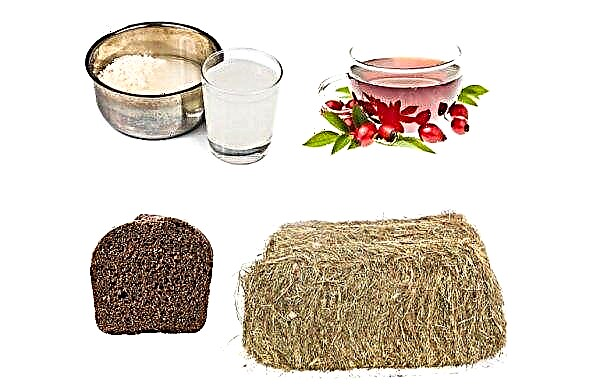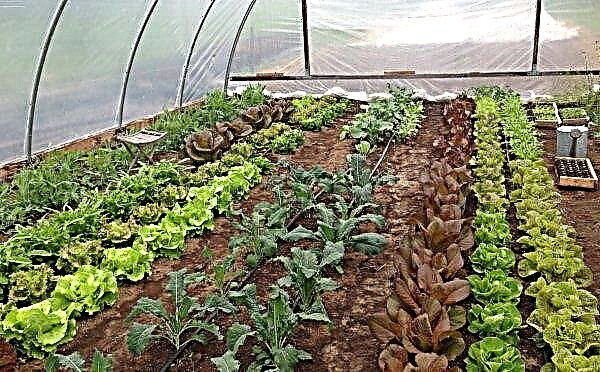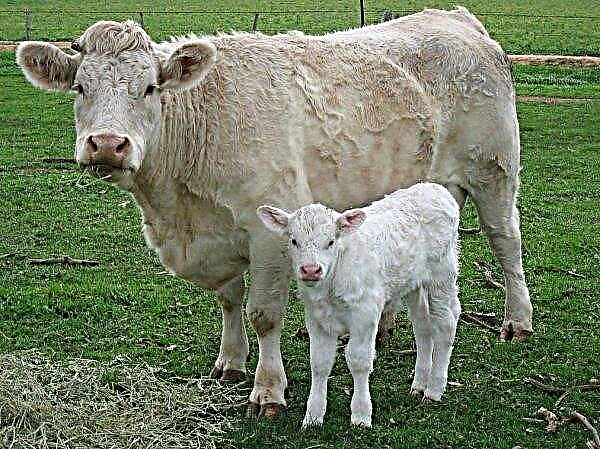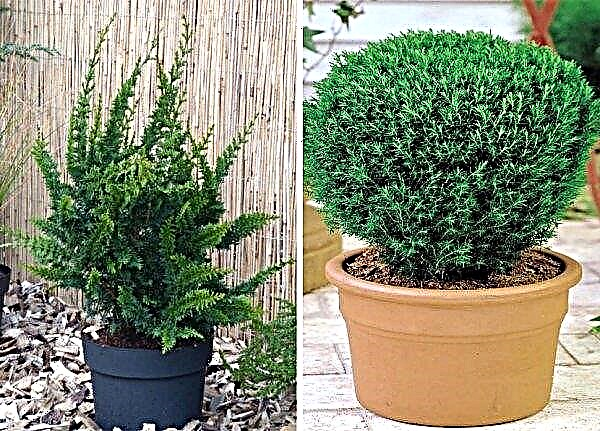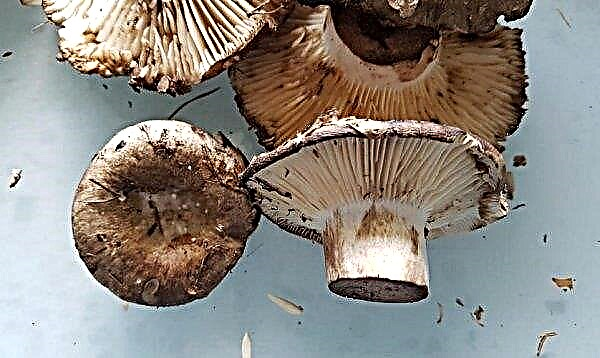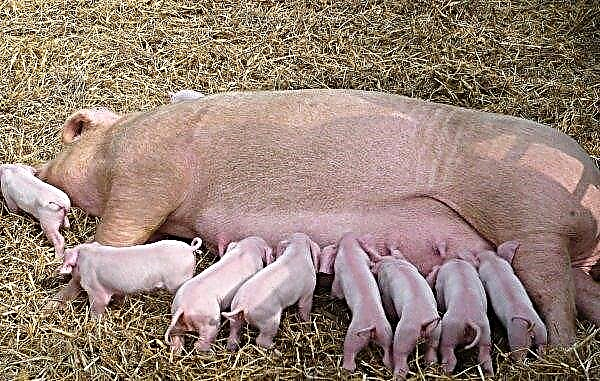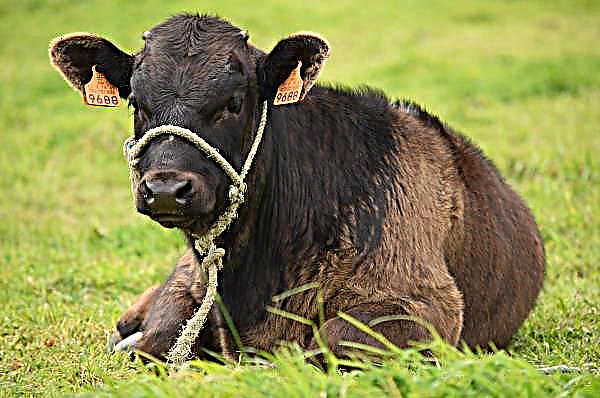Anthurium is notable for unusual flowering in the form of bright red, pink, orange and even a yellow veil in the form of a heart framing a candle-shaped stamen, which is a flower. These unique plants are very attractive, but very capricious and require careful care. Particularly diligently need to carry out a transplant.
Features of growing anthurium
First of all, the owner should remember:
- After the acquisition, anthurium must be transplanted within the next few days. To do this, you need to choose a more comfortable tank with suitable soil for it.
- The flower grows to 0.7 m tall, so for its pot should find a spacious place.
- In the room where the anthurium grows, there should be high humidity, but not cold.
- There should be no drafts.
- The flower pot should not stand in direct sunlight.
- With moderate watering, moist, but not waterlogged soil should be provided. It is enough to water the flower a couple of times a week in the summer, and only one in the winter. The pan of the pot must be kept under control to avoid stagnation of water and excessive soil moisture in it.
- Fertilizers for flowering plants should be applied twice a month.
- A flower transplant should be carried out regularly: every 2-3 years.
Did you know? For their unique appearance, anthurium is often called the "flamingo flower."
When you need to transplant anthurium
Transplanting is one of the measures for caring for a flower, it is necessary to create comfortable conditions. It is necessary to transplant anthurium in such cases:
It is necessary to transplant anthurium in such cases:
- The plant has already grown enough so that the old flowerpot is small, because its roots have grown strongly and the walls of the pot do not allow the anthurium to develop correctly. This becomes apparent if you look into the pot: the roots form a lump and the earth in the pot is practically invisible. Another confirmation that the capacity for growing should be replaced with a larger one is the loss of the process of the rhizome or its element in the drain hole of the pot.
- A reddish or whitish coating appeared on the surface of the soil.
- The plant became sick, uncharacteristic spots appeared on its surface, leaves fade, it develops poorly and grows.
Young anthuriums who are less than four years old should be transplanted every year, replacing a depleted substrate. More adults - transplant less often, enough 1 time in 2-3 years. It is better to transplant in the spring or during the not very hot period of summer - this is more natural, corresponds to the natural cycle, the period of awakening. In spring, the juice circulates more intensively in the plant and it quickly adapts to the new habitat.
As a result, it will be possible to observe the abundant flowering of anthurium. You can start transplanting in the fall, but at this time you should treat the plant more carefully, trying not to injure its roots. The process of changing the pot in the autumn has its own characteristics:
The process of changing the pot in the autumn has its own characteristics:
- before removing the plant with roots from the previous soil, it is abundantly moistened, making the soil loose and supple so as not to injure the rhizome;
- the new pot should be slightly larger than the old, but not much larger than it in size;
- the topsoil must be renewed to cover the bare rhizome. You can add a little wet moss to the new land.
Preparatory Activities
Before you start transplanting the plant into a new pot, you should take care:
- about the right and suitable for a particular plant potted;
- about quality soil;
- About preparing drainage: it can be small pebbles, expanded clay, sea pebbles, brick chips. This natural material will be located at the bottom of the pot, retaining moisture.
In which pot to transplant anthurium
When choosing a new pot, you should pay attention to such points:
- The form. A characteristic feature of anthurium can be called the fact that its roots prefer not to grow deep into the pot, but in different directions. This fact means that when choosing a new flowerpot it is worth taking a closer look at wide containers, for an adult flower the optimal diameter is 25–35 cm.
- Volume. It should not be very large, since a large pot will contribute to the development of pathogenic microflora, excessive moisture of the roots and their decay.
- Material. The optimal solution is plastic, it will allow you to create a suitable temperature regime. A clay flowerpot can be very cold in winter and overheat in summer. However, if preference is given to a more natural material, it is worth paying attention to the fact that the walls of the pot should be coated with glaze from the inside, otherwise the roots may grow into them and the flower will suffer greatly during transplantation.
- The presence of drainage holes. They should be large, as in shipping containers. This will make it possible to carry out good aeration, allow excess water to flow out quickly and not stagnate.
 Wanting to engage in plant propagation, it is worth choosing wide pots, where the anthurium will throw "children" and where new sprouts will develop. However, this will negatively affect the flowering of the plant, which is more likely in compact and even slightly tight pots.
Wanting to engage in plant propagation, it is worth choosing wide pots, where the anthurium will throw "children" and where new sprouts will develop. However, this will negatively affect the flowering of the plant, which is more likely in compact and even slightly tight pots.Important! If a pot that has been used previously is selected for planting an anthurium, it should be thoroughly washed, treated with boiling water, and then rinsed with a potassium permanganate solution.
Soil selection and preparation
During the sale of the plant, it is in a tight shipping pot with a peat or coconut mixture, which contains a large amount of fertilizer, which allows the flower to look attractive in pre-sale form. However, such soil can provide the plant with the substances it needs only for a period of about 2 months, and then its strength will be depleted. The natural habitat of Anthurium is a forest area, where the soil is abundantly mixed with foliage and fallen tree bark. Based on this, a similar soil should be created at home:
Based on this, a similar soil should be created at home:
- slightly acidic (pH 5.5–6.5);
- good moisture permeability, that is, loose, but at the same time able to hold a large plant;
- passing air.
Option 1:
- humus foliage - 2 volumes;
- coarse sand — 1 volume;
- turf - 1 volume.
Option 2:
- turf - 2 volumes;
- fiber peat - 1 volume;
- pine bark - 1 volume;
- ground sphagnum (moss) - 1 volume.
 Before planting, the natural soil must be disinfected to exclude the presence of pathogenic organisms.
Before planting, the natural soil must be disinfected to exclude the presence of pathogenic organisms.To do this, you can subject it to strong heat treatment:
- freeze for several days;
- calcine in the oven;
- to steam;
- treat with a chemical solution of fungicides or manganese.
Planting material for orchids can also be a suitable soil. You can also use a universal peat substrate, mixing it with pine bark in equal proportions, and then adding sand, crushed clay crumb, charcoal.
Plant treatment
Preparing the plant for transplantation involves:
- a thorough examination of the rhizome and pruning of damaged, dried, rotted processes;
- drying the root of the plant removed from the pot - for this you need to leave it in the open air for half an hour;
- processing cut, living roots with crushed coal or “Fitolavin”.
Anthurium transplant at home: step-by-step instructions
To carry out a transplant from tools, you only need a sharp knife, which must undergo disinfection.
Did you know? According to Feng Shui, anthurium is recognized as “male happiness”, while “female happiness” has been christened spathiphyllum. These plants bring harmony in personal relationships and love to the house, provided that they are placed in the neighborhood.
The process of transferring a plant to another flowerpot is as follows:
- To prepare pot, drainage, stock of defended water.
- Water the plant well. If the pot is plastic, you can gently mash it or tap it on the table so that the soil becomes looser and it is easier to get the plant out.
- After 10-15 minutes after watering, you need to carefully get the root ball out of the flowerpot, holding the anthurium by the stems at the beginning of the rhizome so as not to damage it.
- Examine the roots and their condition. Make sure their integrity, the absence of pests, rot. Trim damaged processes.
- Handle the roots chopped coal, Fitolavin, and, if necessary, insecticides or fungicides, if there are pests.
- Down to the bottom of the tank lay out drainage materialand then on top is a small layer of soil.
- Place anthurium in a new pot and fill up the roots, slightly tamping the ground, especially carefully handling its aerial roots (they do not need to be deepened much). The surface of the earth should not reach 2-3 cm to the edge of the pot. Sphagnum can be placed on top of the soil, which will retain moisture.
- Put a pot with a transplanted flower in a cozy place without drafts and not in direct sunlight. So he should stand a couple of days.
If there are daughter processes - they are planted in separate flowerpots. By dividing the bush, a highly overgrown plant can be propagated by planting its parts in separate flowerpots.
Video: Anthurim transplant secrets
Immediately after purchase
After acquiring anthurium, it must be transplanted as soon as possible from the transport soil, which is rapidly depleted, into high-quality and nutritious soil, which will provide good growth, beautiful and plentiful flowering.
First of all, you need:
- cut flower stalks - so it will be easier for the plant to get comfortable in a new pot;
- transplant a flower into a nutrient soil with drainage.
During flowering
As a rule, plants do not transplant during their flowering, as this causes stress, because of which they can lose color and new buds. However, the blooming Anthurium is quite resistant to stress. Even if it blooms, after transplanting it will remain with the same number of flowers. The main warning in the process of flower transplantation is the need to carefully treat the fragile roots of anthurium.
The main warning in the process of flower transplantation is the need to carefully treat the fragile roots of anthurium.
Sick anthurium
Signs of a flower disease can be:
- the appearance of spots on the leaves and stem;
- withering foliage;
- lack of flowering;
- slow growth.

The causes of the disease can be:
- excessive watering, from which the roots can begin to rot;
- too compacted, not loose soil;
- the appearance of pests.
Transplanting a diseased flower involves:
- mandatory cleansing of the rhizome of the flower from the old soil, after removing it from the old flowerpot;
- inspection and diagnosis of the safety and health of the roots;
- trimming rotten or damaged sections of the root system to white tissue;
- treatment of healthy processes at the cutting site with charcoal, wood or activated;
- removal of withered or dried leaves.
If the plant had traces of rot, late blight or other diseases, then its roots, and, if necessary, the crown and soil, are treated with fungicides.
Further care after transplantation
Having planted the anthurium in a new flowerpot, it must be put in a non-blown corner, where there will be no scorching sunlight. At first, the plant will require more attention than it was given before the transplant. This is primarily due to the fact that the root system, as a rule, is at least slightly injured, some processes are cut off, and the flower needs time and strength to recover.
Important! The leaves of the plant must be washed regularly to ensure good hydration and get rid of parasites. This can be done with a wet rag, or just by sending an anthurium to the shower.
To do this, watering should be avoided immediately after planting, since it can provoke rotting of the freshly cut and not healed roots. If the flower is especially weak, it is tied to a support until it gets stronger.
Watering and feeding
As already mentioned, immediately after transplanting the anthurium, it should not be watered. This can be done for the first time after the topsoil becomes dry. The plant needs moderate watering, which means that the flower should not be overdried; at the same time, it is necessary to water it only when the topsoil in the flowerpot becomes completely dry. The amount of watering should be such as not to moisten the soil excessively and, as a result, to prevent rotting of the roots. In cool and humid rooms you can water less often. For irrigation use settled water at room or slightly higher temperature. After transplanting into fresh soil, it is not necessary to introduce fertilizers earlier than after 2-3 months, since the correct soil already contains a large amount of nutrients. Earlier dressing can harm the flower, burn not strong and not healed root tissue.
For irrigation use settled water at room or slightly higher temperature. After transplanting into fresh soil, it is not necessary to introduce fertilizers earlier than after 2-3 months, since the correct soil already contains a large amount of nutrients. Earlier dressing can harm the flower, burn not strong and not healed root tissue.
The following top dressings are recommended:
- for aroid plants, halving the dosage;
- complex fertilizers, also in diluted form, to prevent an excess of salts;
- mullein infusion;
- mulch from leaf humus;
- chicken infusion infusion.
The frequency of feeding should be as follows:
- once every few weeks in the spring-summer period;
- once a month for the rest of the time.
Growing conditions
The successful growth and development of anthurium primarily depends on the organization of the correct growing conditions. Humidity. Under normal household conditions, the humidity level is not high enough for the plant to feel comfortable. To correct this situation, you can use 3 methods:
Humidity. Under normal household conditions, the humidity level is not high enough for the plant to feel comfortable. To correct this situation, you can use 3 methods:
- purchase a humidifier;
- put a flower pot in a container with wet sand or expanded clay;
- moisten the air artificially from the spray gun, irrigating the air around, not the leaves of the flower, which can later become stained with drops of water.
Heat. The room should not be cool, the temperature should be around + 20-30 ° C. In winter, the room should not be colder + 16 ° C, at the same time, putting a pot with anthurium near the heater is also not worth it.
Shine. This flower requires bright lighting, but the light should be sparse, without direct sunlight. With a lack of light, the leaves begin to fade and deform, the flower does not grow well and does not bloom. When choosing a window in the house where the anthurium will stand, the eastern or western side will be the best solution.
Possible mistakes
The following errors should be avoided during transplantation:
- improperly selected soil;
- dense, not loose soil;
- careless handling of the plant, especially its roots, during transshipment;
- bad place for a flowerpot with drafts, lack of light and humidity;
- heavy or insufficient watering;
- frequent fertilization;
- irregular transplants, change of nutrient soil.
Anthurium is very attractive, but needs care and proper care. It is especially important to pay maximum attention to the plant roots during transplantation, since they are very fragile. For a good flowering of anthurium, you should carefully choose a flowerpot and high-quality soil.

